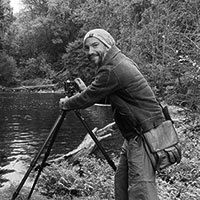Photographing Butterflies with the Olympus 40-150mm f2.8
The macro capabilities of the Olympus 40-150mm f/2.8 are eye-opening. Coupled with the OMD E-M1, I was able to capture sharp, colorful butterfly images at the Sweetbriar Nature Center. BTW, if you haven’t been here, they do amazing work to care for and rehabilitate wildlife. Sue volunteered there for a while and the people who run it do an outstanding job.
Places like this deserve your support. Like most places on Long Island, it gets a bit crowded on the weekends but I was there on a quiet Friday, which allowed me to really take my time and carefully compose each shot.
One of my goals was to shoot through the flowers to create soft, colorful images with shallow depth of field. Anyone who has ever said you can’t get good bokeh with a micro 4/3 system has clearly never seen images from this lens. In fact, the depth of field is so shallow, there were times when I chose to stop down to f4 to keep a bit more of the butterfly sharp.
It’s so convenient to have the ability to shoot macro without carrying an extra dedicated lens. With my 12-40 and 40-150 I have an effective 24-300 range with a constant aperture of f2.8 in a weather-sealed system. I may be adding the MC-14 converter for distant wildlife soon as well.
This lightweight system has made me feel more dangerous photographically, and by that I mean, ready for anything in an instant. My E-M10 has the 12-40mm while the E-M1 has the 40-150mm mounted.
Again, for those who think a smaller sensor is a limiting factor, they would only need to see these shots at 1:1 in Lightroom. The detail is unreal, allowing me to see the finest hairs on the insects, and even the subtle texture of their eyes.
I honestly believe that this is the best overall camera system I’ve ever used, and that includes my Canon 6D. In the right hands this setup does everything right with little compromise. At 16mp the files sizes are large with enough resolution for professional work, stock sales, and massive prints. Then again, this was also possible with my old Canon 40D which had 10mp.
These were all shot handheld around 1/250th of a second to prevent camera shake. Since the lens is smaller and lighter, it’s easier to do this. With a bigger lens I would have likely opted for around 1/500th which would have required a higher ISO. This is yet another benefit of the micro 4/3 sensor. The lenses don’t need to be as big to cover the larger sensor.
I set the E-M1 to C-AF in continuous Low, using the small AF points for the ultimate precision. I found focus to be very fast and highly accurate. Of course the ability to instantly see the results in the EVF after capture confirmed my technique was working, and I confidently carried on, shooting a few hundred images. Here a just a few of my favorites.
JOIN OUR FACEBOOK GROUP

Chris Corradino is the founder and lead instructor at the New Zealand Photo School. Their overarching mission is to provide high-quality photography education in the scenic Hawke’s Bay region of NZ and beyond. They also serve a worldwide clientele with online photography classes, private lessons, Lightroom editing courses, and photo business mentoring. With a mix of in-person workshops and online photography classes, they have successfully trained thousands of artists in most commercial and creative photography genres.
Connect at www.nzphotoschool.com and on Instagram @nzphotoschool












